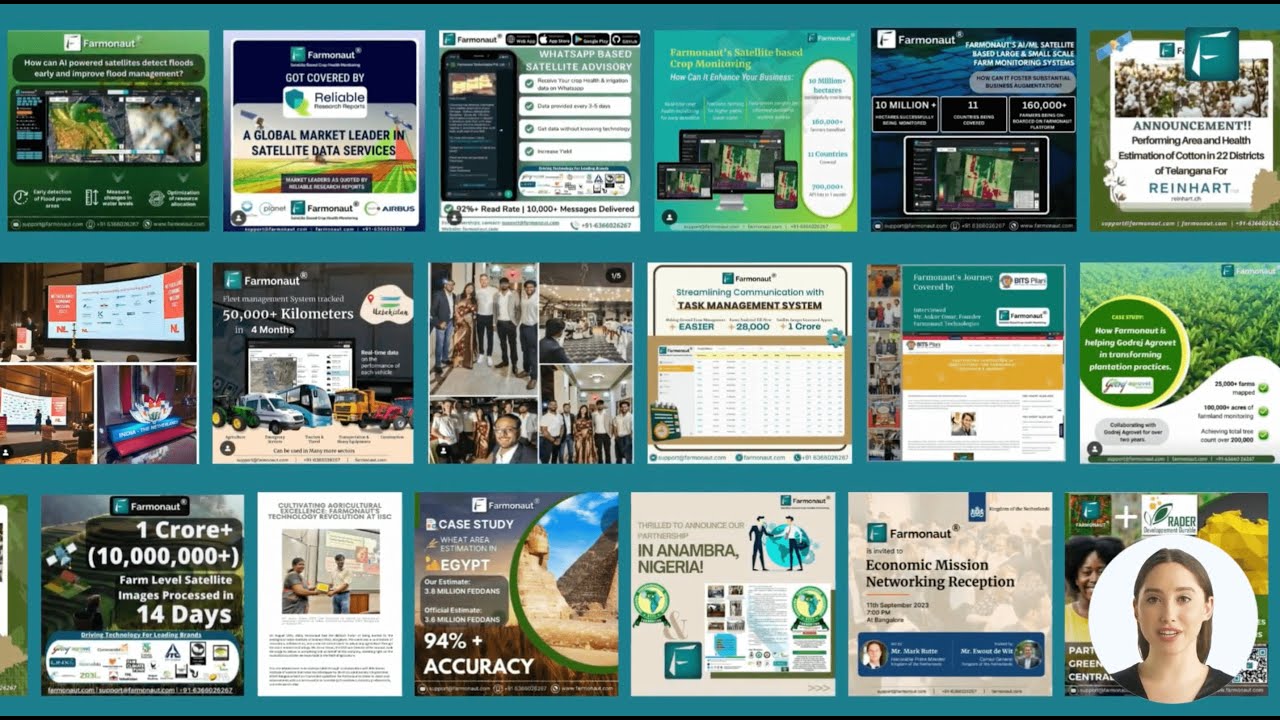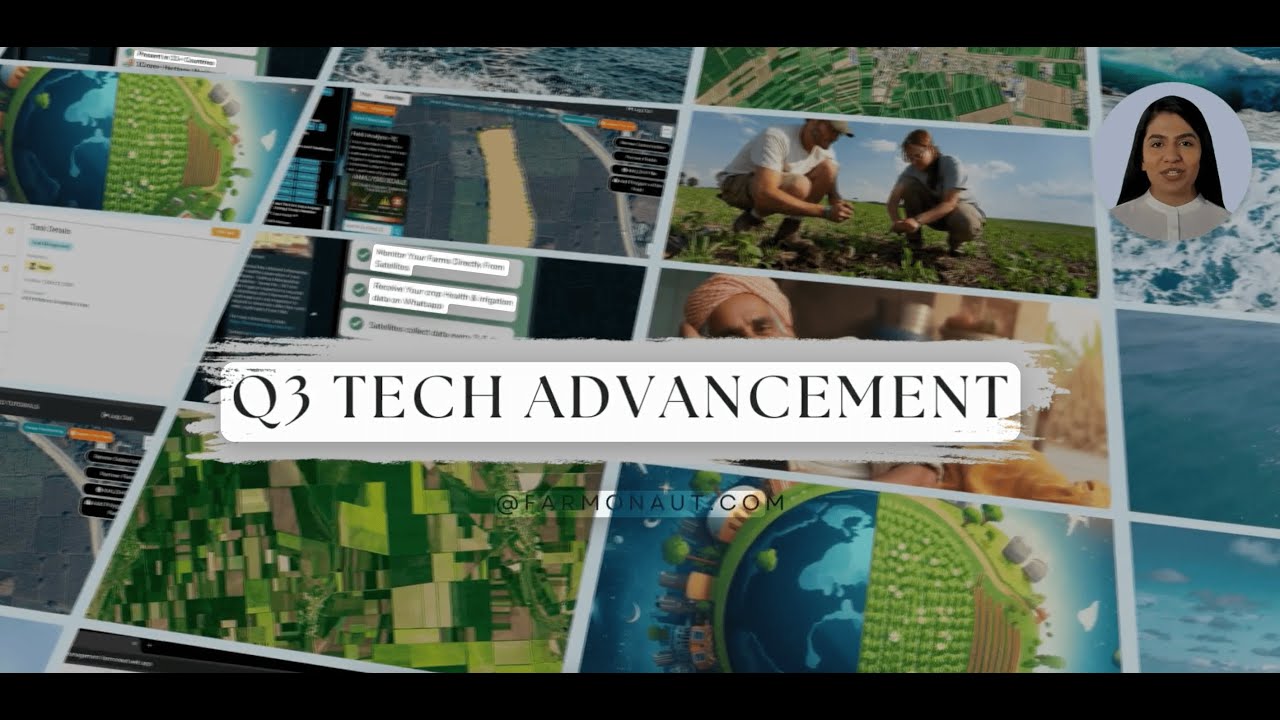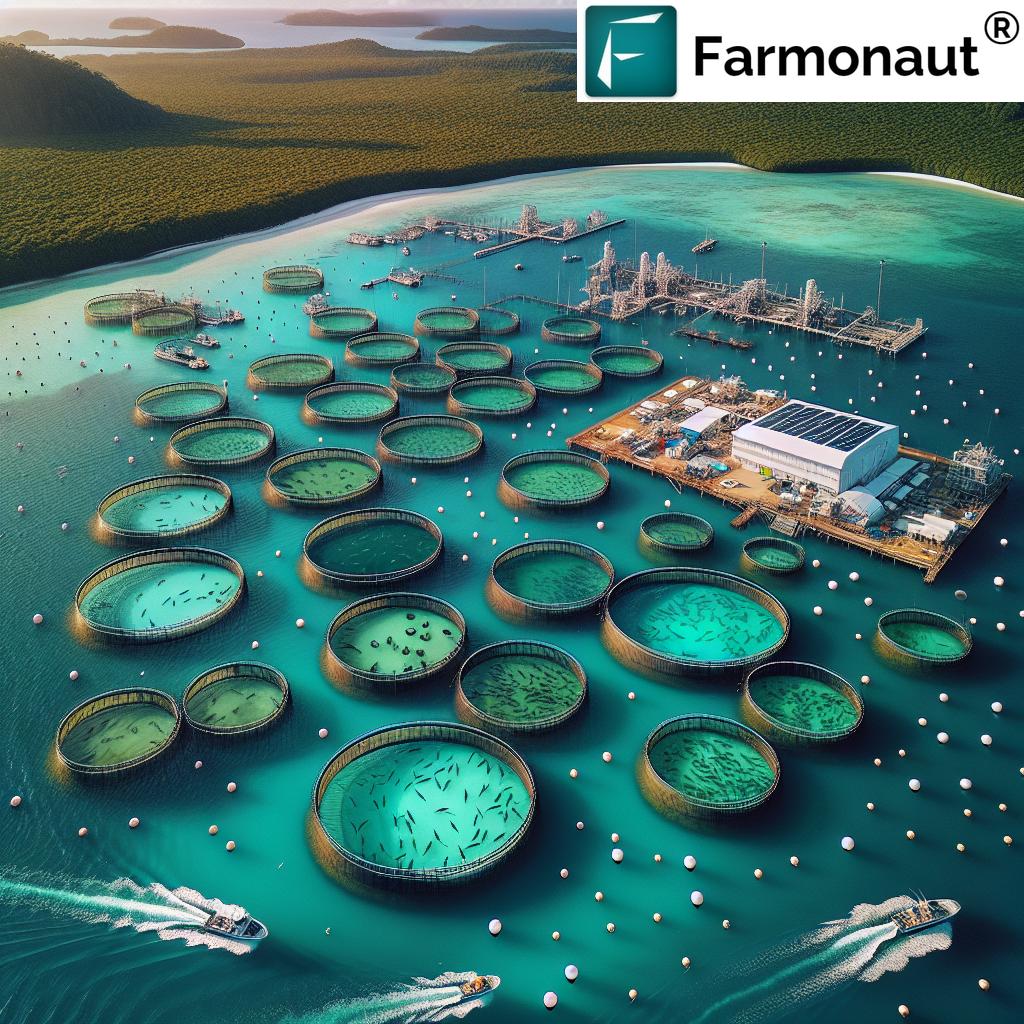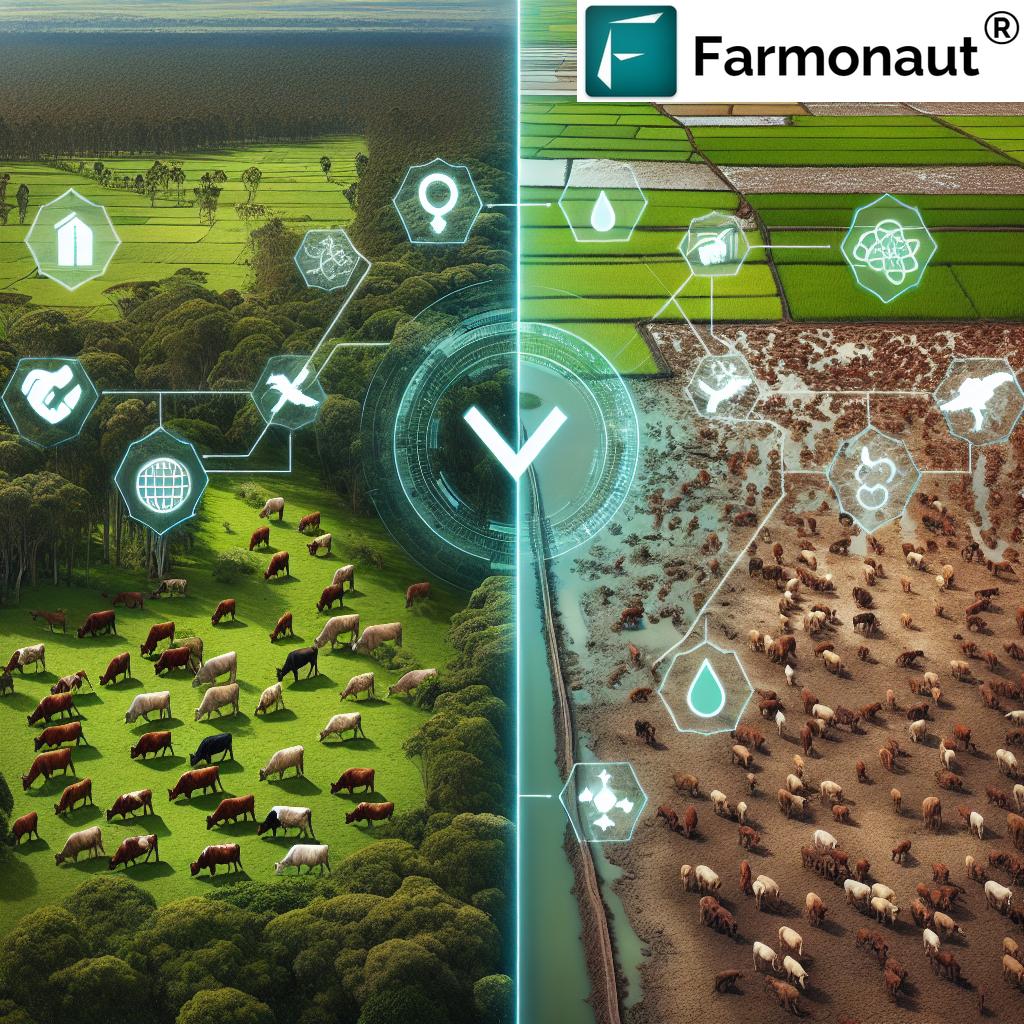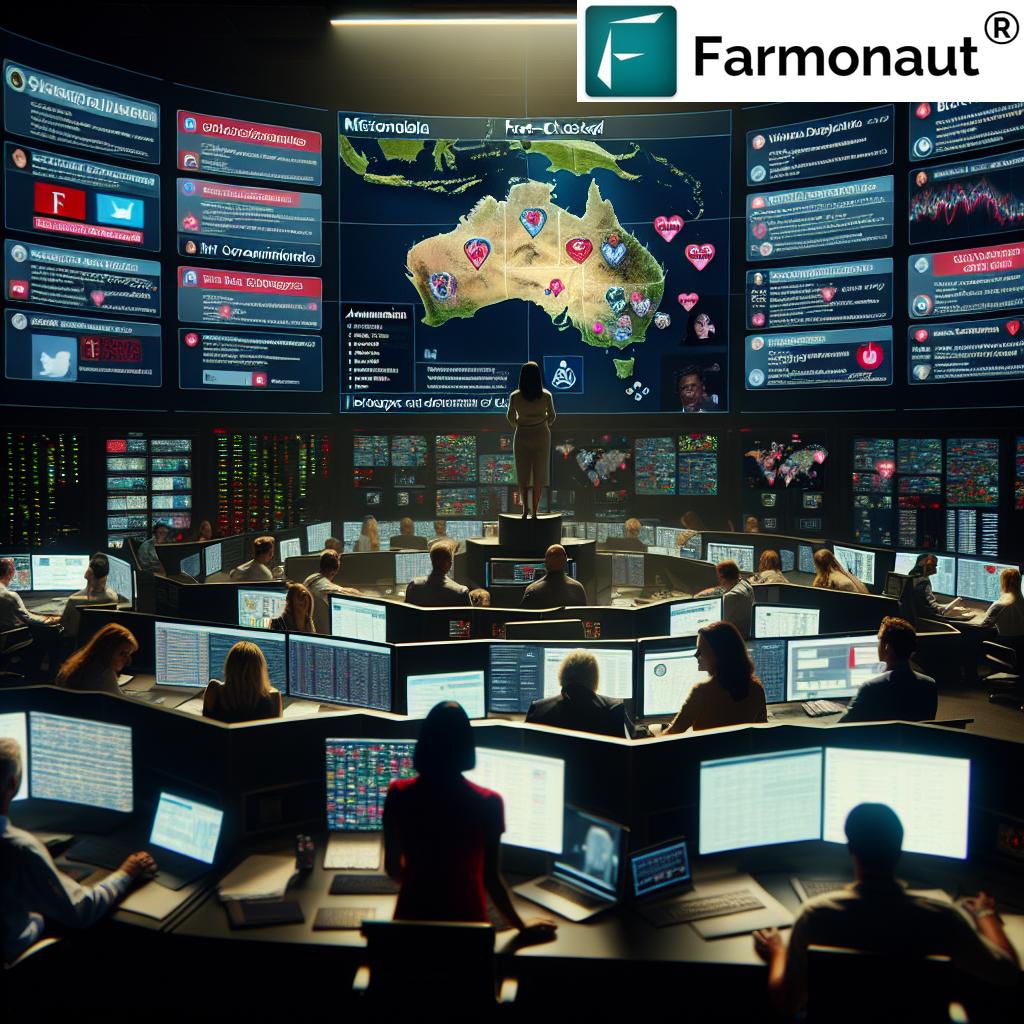Australian Aquaculture Boom: Sustainable Practices Drive Industry Growth Despite Export Challenges
“Australian aquaculture is projected to dominate 64% of total fisheries production value by 2028-29.”
Welcome to our comprehensive analysis of the Australian seafood industry trends and the burgeoning aquaculture sector. As we delve into the fascinating world of sustainable aquaculture practices and their impact on industry growth, we’ll explore how this vital sector is navigating challenges while charting a course for a prosperous future.
The Australian aquaculture and fisheries sectors are experiencing a remarkable transformation, with projections indicating a 0.5% increase in production value for 2023-24, reaching an impressive $3.56 billion. This growth is particularly noteworthy given the complex interplay of factors influencing the industry, from climate change impacts to evolving market dynamics.
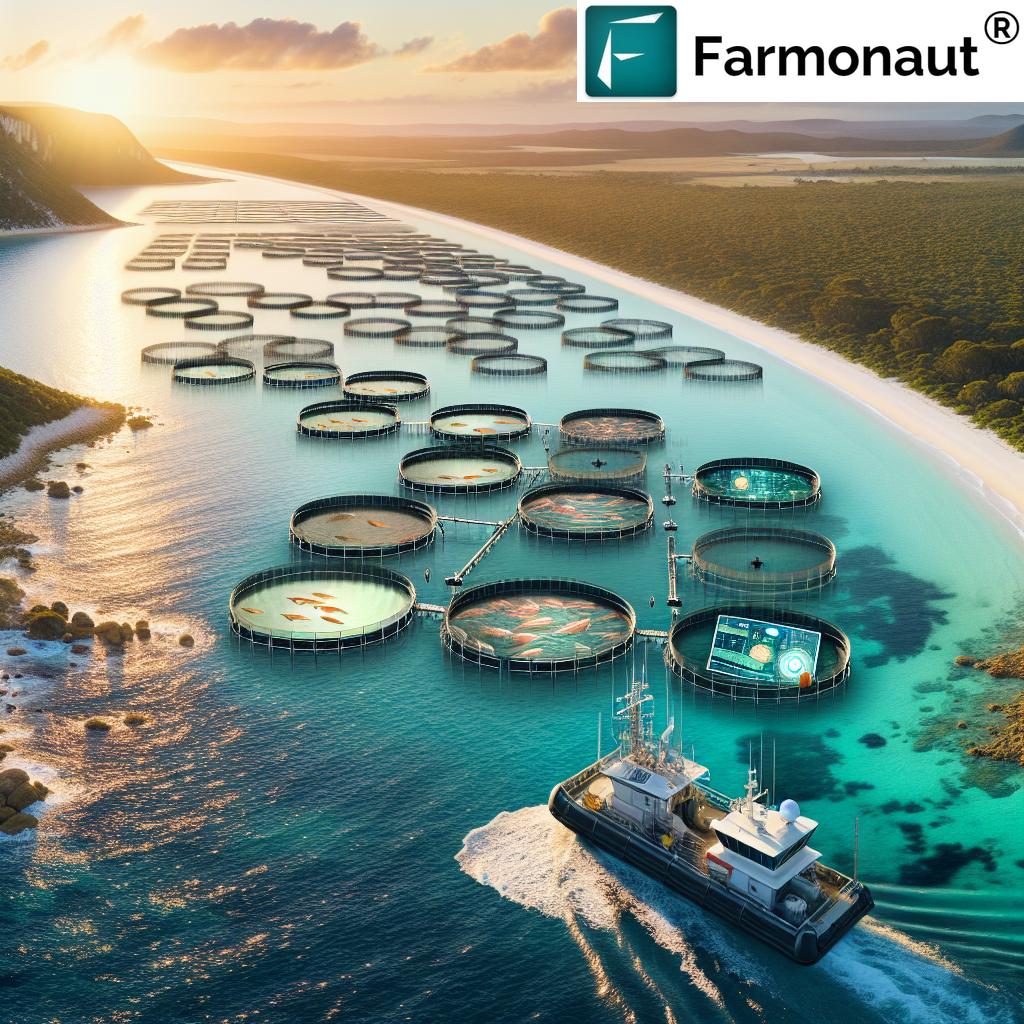
In this blog post, we’ll take a deep dive into the latest developments shaping the Australian seafood industry, examining the sustainable aquaculture practices driving growth, the challenges faced in export markets, and the innovative solutions being implemented to ensure long-term success. From the thriving tuna farms to the delicate abalone cultivation, we’ll explore how various species contribute to this evolving landscape.
The Rise of Sustainable Aquaculture in Australia
As we witness the remarkable growth of the Australian aquaculture sector, it’s crucial to understand the sustainable aquaculture practices that are driving this expansion. These practices not only contribute to the industry’s economic success but also ensure the long-term health of our marine ecosystems.
- Recirculating Aquaculture Systems (RAS): These closed-loop systems minimize water usage and reduce environmental impact.
- Integrated Multi-Trophic Aquaculture (IMTA): Combining species that benefit from each other’s presence, such as fish and seaweed.
- Precision Feeding Technologies: Utilizing advanced sensors and AI to optimize feed distribution and reduce waste.
- Genetic Selection Programs: Developing disease-resistant and fast-growing strains of fish and shellfish.
These innovations are not only enhancing productivity but also addressing critical biosecurity concerns, ensuring the health and safety of aquaculture stocks. As we continue to refine these practices, the Australian aquaculture industry is setting new standards for sustainability in seafood production.
Market Dynamics and Export Challenges
While the domestic seafood market in Australia shows promising growth, the industry faces significant export challenges that could potentially impact seafood trade. These challenges include:
- Global Competition: Increased production from other countries is putting pressure on Australian exports.
- Trade Tensions: Geopolitical issues affecting key export markets, particularly in Asia.
- Currency Fluctuations: The strength of the Australian dollar impacting export competitiveness.
- Regulatory Hurdles: Stringent international standards and changing import regulations in target markets.
Despite these challenges, the Australian seafood industry is adapting through diversification of export markets, value-adding to products, and leveraging Australia’s reputation for high-quality, sustainable seafood.
“The Australian seafood industry expects a 0.5% growth in 2023-24, reaching a value of $3.56 billion.”
Climate Change Impact on Fisheries and Aquaculture
The climate change impact on fisheries and aquaculture is a critical concern for the Australian seafood industry. As we navigate these challenges, it’s essential to understand the various ways in which climate change is affecting our marine ecosystems and aquaculture operations:
- Rising Sea Temperatures: Altering fish migration patterns and impacting species distribution.
- Ocean Acidification: Affecting shellfish growth and coral reef ecosystems.
- Extreme Weather Events: Increasing the risk of damage to aquaculture infrastructure.
- Changes in Rainfall Patterns: Impacting freshwater aquaculture and estuarine environments.
To address these challenges, the industry is investing in research and implementing adaptive strategies. These include developing heat-resistant strains of farmed species, relocating farms to more suitable areas, and improving infrastructure resilience.
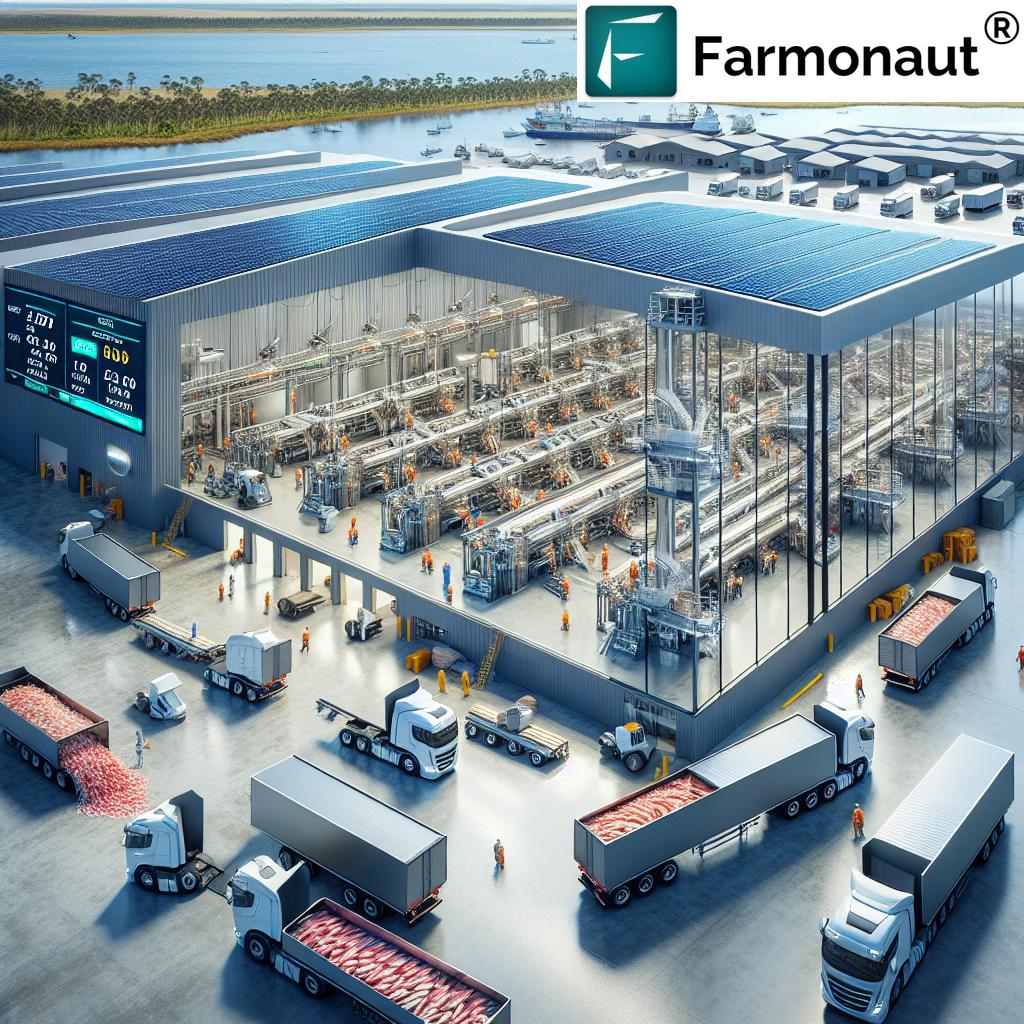
Aquaculture Production Growth: Species in Focus
The aquaculture production growth in Australia is driven by a diverse range of species, each contributing uniquely to the industry’s success. Let’s explore some of the key players:
- Atlantic Salmon: Tasmania’s flagship aquaculture species, known for its high value and export potential.
- Barramundi: A popular choice for both domestic and export markets, thriving in tropical and subtropical regions.
- Oysters: Including Sydney rock oysters and Pacific oysters, valued for their premium quality.
- Bluefin Tuna: A high-value species farmed primarily in South Australia.
- Abalone: Prized in Asian markets, with both wild-caught and farmed production.
Each of these species requires specific farming techniques and presents unique challenges and opportunities. The industry’s ability to diversify and innovate across these species contributes significantly to its resilience and growth potential.
Innovations in Aquaculture Technology
Aquaculture technology innovations are playing a crucial role in driving the industry forward. These advancements are not only improving productivity but also enhancing sustainability and reducing environmental impact. Some key innovations include:
- AI-Powered Feeding Systems: Optimizing feed distribution and reducing waste.
- Underwater Drones: For monitoring fish health and infrastructure maintenance.
- Blockchain Technology: Enhancing traceability and transparency in the supply chain.
- Biofloc Technology: Improving water quality and reducing the need for water exchange in intensive systems.
These technologies are transforming the way aquaculture operations are managed, leading to increased efficiency and sustainability. As the industry continues to embrace these innovations, we can expect to see further improvements in production methods and environmental stewardship.
At Farmonaut, we recognize the importance of technology in advancing sustainable agriculture and aquaculture practices. Our satellite-based farm management solutions and AI-driven advisory systems are designed to support farmers and aquaculturists in making data-driven decisions for optimal resource management and productivity.
Economics of Fisheries and Aquaculture in Australia
Understanding the fisheries and aquaculture economics is crucial for grasping the full picture of Australia’s seafood industry. The sector’s economic landscape is shaped by various factors:
- Production Costs: Including feed, labor, energy, and infrastructure maintenance.
- Market Demand: Both domestic and international, influencing prices and production volumes.
- Regulatory Environment: Impacting operational costs and market access.
- Research and Development Investments: Driving innovation and long-term sustainability.
The industry’s economic resilience is evident in its ability to adapt to changing market conditions and environmental challenges. As we look towards the future, the focus on sustainable practices and technological innovation is expected to further strengthen the economic foundations of Australian aquaculture.
Risk Management in the Seafood Industry
Seafood industry risk management is a critical aspect of ensuring long-term sustainability and profitability. The Australian aquaculture sector faces various risks that require careful management:
- Disease Outbreaks: Implementing robust biosecurity measures to prevent and control diseases.
- Environmental Risks: Developing strategies to mitigate impacts of climate change and extreme weather events.
- Market Volatility: Diversifying product offerings and target markets to reduce dependency on single markets.
- Regulatory Compliance: Staying ahead of evolving regulations and standards in both domestic and export markets.
Effective risk management strategies often involve a combination of preventive measures, contingency planning, and adaptive management approaches. By proactively addressing these risks, the Australian seafood industry can enhance its resilience and maintain its competitive edge in global markets.
Explore Farmonaut’s API for advanced agricultural data solutions
Sustainable Practices and Environmental Stewardship
The commitment to sustainable aquaculture practices is at the heart of Australia’s seafood industry growth. Environmental stewardship is not just a regulatory requirement but a fundamental principle driving innovation and long-term success. Key aspects include:
- Ecosystem-Based Management: Considering the broader ecological impacts of aquaculture operations.
- Waste Reduction and Recycling: Implementing circular economy principles in aquaculture production.
- Renewable Energy Integration: Reducing carbon footprint through solar and wind power adoption.
- Habitat Conservation: Protecting and restoring marine habitats affected by aquaculture activities.
These sustainable practices not only benefit the environment but also enhance the industry’s reputation, opening up new market opportunities for eco-conscious consumers. As the sector continues to grow, maintaining this balance between productivity and sustainability will be crucial for long-term success.
Market Access and Trade Relations
Securing and maintaining market access is crucial for the Australian seafood industry’s continued growth. As we navigate the complexities of international trade, several key factors come into play:
- Free Trade Agreements: Leveraging existing and negotiating new agreements to reduce tariffs and trade barriers.
- Quality Assurance Systems: Maintaining rigorous standards to meet international market requirements.
- Brand Australia: Promoting the unique qualities of Australian seafood in global markets.
- Digital Trade Platforms: Utilizing e-commerce and blockchain for enhanced traceability and market reach.
Despite ongoing challenges, the industry continues to explore new markets and strengthen existing trade relationships. The focus on premium quality and sustainable production methods positions Australian seafood favorably in high-value international markets.
Access Farmonaut’s API Developer Docs for seamless integration
Future Outlook and Industry Projections
As we look towards the future of Australian aquaculture and fisheries, several key trends and projections emerge:
- Continued Growth: Aquaculture is expected to dominate 64% of total fisheries production value by 2028-29.
- Technological Integration: Increased adoption of AI, IoT, and big data analytics in aquaculture operations.
- Diversification: Expansion into new species and product forms to meet evolving consumer demands.
- Sustainability Focus: Enhanced emphasis on eco-friendly practices and circular economy principles.
These projections paint a promising picture for the industry, highlighting its resilience and adaptability in the face of challenges. By embracing innovation and sustainability, the Australian seafood sector is well-positioned to capitalize on emerging opportunities and maintain its status as a global leader in aquaculture.
Australian Aquaculture Industry Outlook (2023-2028)
| Year | Production Value (Estimated) | Aquaculture Share (%) | Key Influencing Factors |
|---|---|---|---|
| 2023-24 | $3.56 billion | 58% | Export challenges, Climate change impacts |
| 2024-25 | $3.65 billion | 60% | Technological innovations, Sustainability practices |
| 2025-26 | $3.75 billion | 61% | Market diversification, Biosecurity measures |
| 2026-27 | $3.85 billion | 62% | Species diversification, Environmental adaptations |
| 2027-28 | $3.95 billion | 63% | Consumer demand shifts, Regulatory changes |
| 2028-29 | $4.05 billion | 64% | Advanced aquaculture technologies, Global market dynamics |
Conclusion: Navigating Challenges, Embracing Opportunities
As we’ve explored throughout this comprehensive analysis, the Australian aquaculture and fisheries sectors are at a pivotal juncture. The industry’s ability to adapt to challenges while capitalizing on opportunities has positioned it for continued growth and success.
Key takeaways include:
- The critical role of sustainable aquaculture practices in driving industry growth
- The importance of innovation and technology in overcoming climate change impacts on fisheries
- The need for strategic approaches to address seafood export challenges
- The potential for further expansion in the domestic seafood market
As we look to the future, the Australian seafood industry’s commitment to sustainability, innovation, and quality positions it well to meet the growing global demand for responsibly sourced seafood. By continuing to invest in research, technology, and sustainable practices, the industry is not just securing its own future but also contributing to global food security and environmental stewardship.
FAQs
Q: What is driving the growth of aquaculture in Australia?
A: The growth is primarily driven by sustainable practices, technological innovations, increasing domestic and global demand for seafood, and the industry’s ability to adapt to environmental challenges.
Q: How is climate change affecting the Australian seafood industry?
A: Climate change impacts include rising sea temperatures, ocean acidification, extreme weather events, and changes in species distribution, all of which require adaptive strategies from the industry.
Q: What are the main export challenges faced by the Australian seafood industry?
A: Key challenges include global competition, trade tensions, currency fluctuations, and evolving regulatory requirements in international markets.
Q: How is technology contributing to sustainable aquaculture practices?
A: Technologies such as AI-powered feeding systems, underwater drones, blockchain for traceability, and recirculating aquaculture systems are enhancing efficiency and sustainability in the sector.
Q: What is the projected growth for the Australian aquaculture industry?
A: The industry is expected to grow steadily, with aquaculture projected to account for 64% of total fisheries production value by 2028-29.


